Experience the chaos, kindness, and quiet faith of the Baishatun Mazu procession.
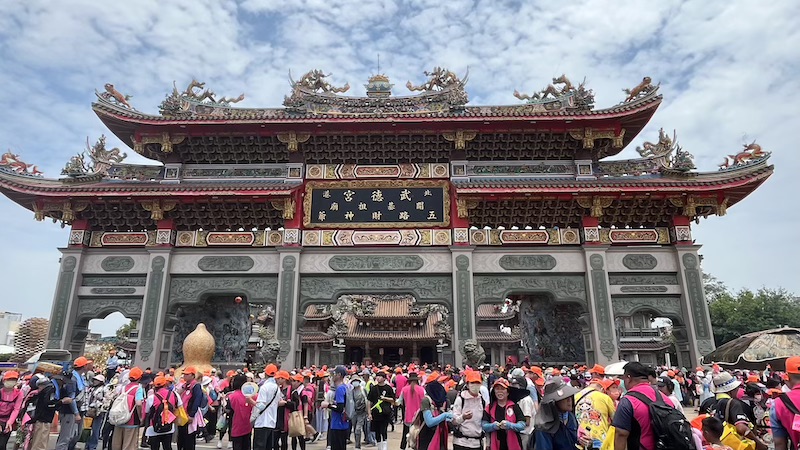
Imagine a spiritual journey that draws over 320,000 participants, spans more than 400 kilometers, and transforms ordinary roads into rivers of devotion. This isn’t a scene from centuries past – it’s the annual Baishatun Mazu Pilgrimage (白沙屯媽祖進香), one of Taiwan’s most extraordinary cultural events happening right now. The pilgrimage honors Mazu, the goddess of the sea and a central figure in Taiwanese folk religion. (Learn more about Mazu in our upcoming article!)
What Makes the Baishatun Mazu Pilgrimage Unique?
While Taiwan hosts several Mazu pilgrimages, the Baishatun pilgrimage stands out for three distinctive characteristics that locals call the “three uncertainties”:
- No Fixed Route: Unlike other pilgrimages with fixed routes, Baishatun Mazu’s path is determined during the journey itself. Believers say the goddess herself decides where to go.
- No Fixed Schedule: The pilgrimage doesn’t follow a strict timetable. Stops and departures depend on various factors, including divine communication through ritual ceremonies.
- No Fixed Duration: The journey typically takes 9-12 days to complete the 400km round trip between Baishatun Gong Tian Temple (白沙屯拱天宮) in Miaoli County and Beigang Chaotian Temple (北港朝天宮) in Yunlin County – but this can vary.
This unpredictability creates an atmosphere of anticipation and heightened spiritual connection, as devotees must literally follow the goddess’s lead rather than a predetermined plan.
(Video credit: PTS News Network)
My First Baishatun Experience: A Personal Reflection
Here’s what I discovered on my one-day journey from Yuanchang Township Office (元長鄉公所) to Beigang Chaotian Temple (北港朝天宮) in Yunlin County.
I never planned to “chase Mazu”. My friend suggested we go see what all the excitement was about. I was curious about rumors of endless free food along the route. Perhaps, I thought, this could be a unique cultural experience – an opportunity to understand what draws hundreds of thousands to participate year after year.
What I saw was amazing. The scale is overwhelming: masses of people walking under the hot sun, all moving together despite the heat and tiredness. The feeling of devotion is very strong.
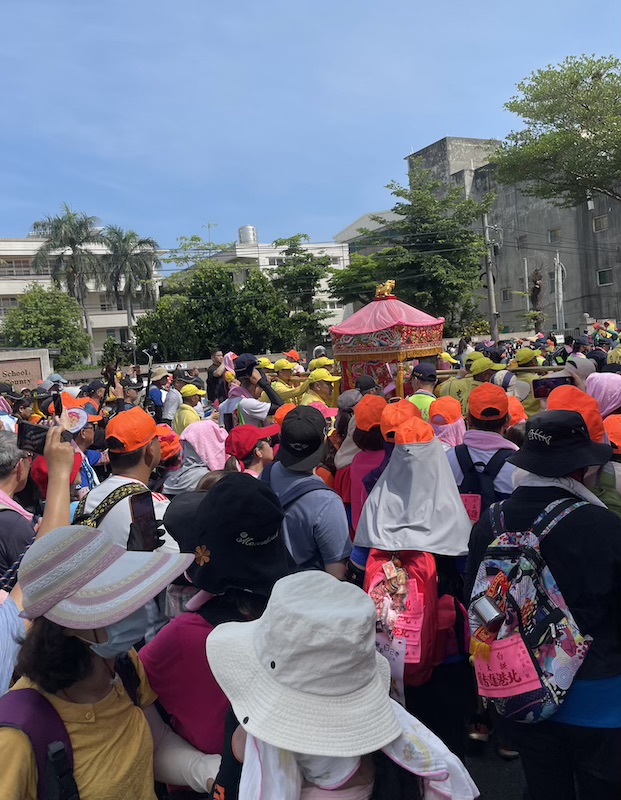
Most striking was the extraordinary support system along the route. Volunteers stand by the road offering free supplies – water, fruit, hot meals, medical care, massage stations, and even mobile bathroom facilities transported by trucks. Some supporters offered rides in private vehicles to tired participants. Impromptu performances and cheering squads with megaphones encourage pilgrims along the way.
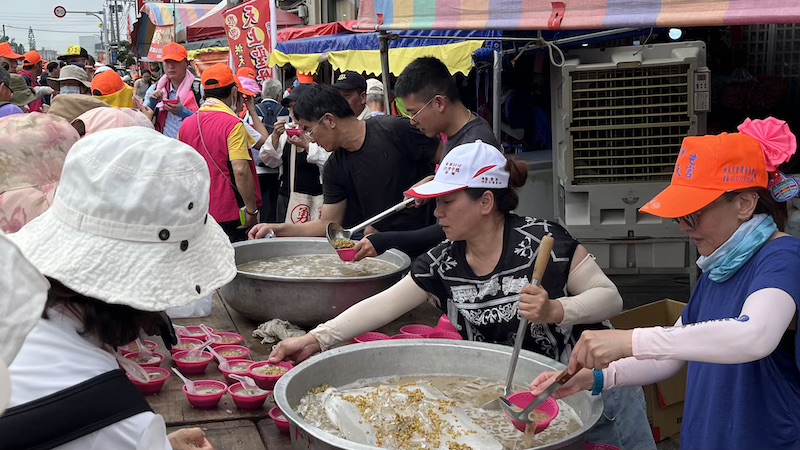
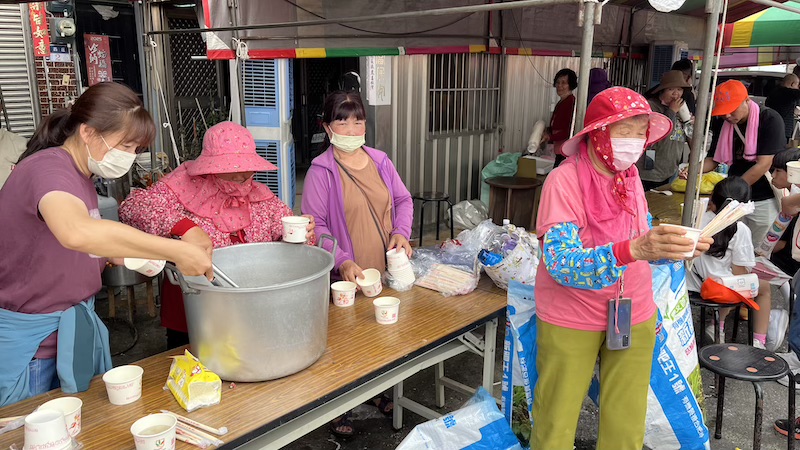




As we got closer to Beigang Chaotian Temple (北港朝天宮), the crowds became so dense that we could barely move. Streets surrounding the temple transformed into a sea of humanity. At that moment, I truly understood the power of shared faith – the invisible force that brings so many people together.

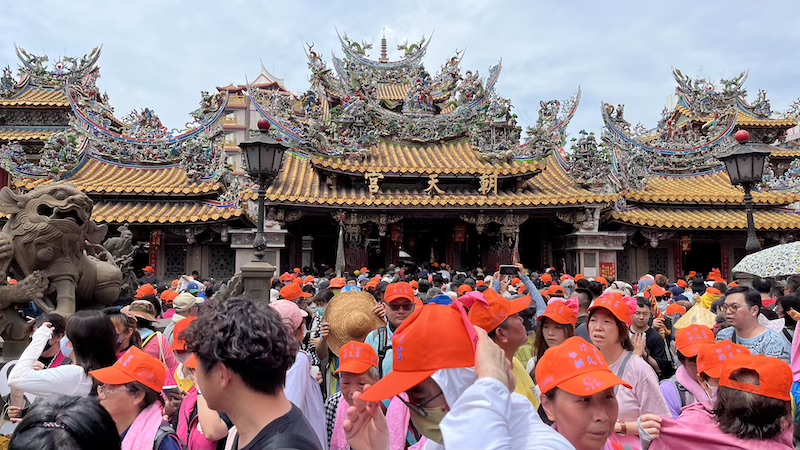
What touched me most was seeing the selfless generosity of the volunteers who help pilgrims (we call pilgrims Xiang Deng Jiao or 香燈腳 in Mandarin, which means Strong Legs of Incense and Lanterns). These volunteers showed pure kindness, often insisting I take more food or drinks than I needed. They stood for hours in the hot sun, giving out supplies, expecting nothing in return.
When I hesitated to accept their offerings, they would add more, saying I would need it after the long walk. Their eyes showed no expectation of thanks – only genuine desire to help. In that moment, I believed – more than ever – that human goodness still exists in this world. If you’ve ever doubted it, you need to see it with your own eyes.
If you doubt whether true kindness still exists today, this experience will show you that it does – everywhere around you. Walk alongside strangers, experience pure generosity, and witness the power of human connection that thrives in Taiwan.
Mazu, who lived over 700 years ago during the Song Dynasty (宋朝), has become a symbol that connects people across time and place. This pilgrimage shows universal values of compassion and community that everyone can understand, regardless of culture or background.
Only by participating can you truly understand how this experience can transform the way you see life and humanity.
How to Join the Baishatun Mazu Pilgrimage
If you’re intrigued by this cultural phenomenon and want to experience it, here’s what you need to know:
2025 Baishatun Mazu Pilgrimage Schedule
- Date: May 1, 2025 – May 11, 2025
- Starting Point: Baishatun Gongtian Temple (白沙屯拱天宮), Miaoli County
- Route: No fixed path – Mazu decides the way each year.
- Planned Journey:
- May 1 ~ May 3: Baishatun Gongtian Temple → Beigang Chaotian Temple (北港朝天宮)
- May 4 ~ May 11: Beigang Chaotian Temple → Baishatun Gongtian Temple
How to Join the Baishatun Mazu Pilgrimage?
- You don’t need to be religious and you don’t even need to walk the entire route.
- Join the crowd at any point along the road. Even walking 30 minutes is enough to feel the energy and devotion of this pilgrimage.
- To find Mazu’s real-time location, use the 白沙屯 GPS 即時定位 App (available only in Chinese).
Practical Tips for Foreign Participants
- What to Bring:
- Comfortable walking shoes
- Sun protection (hat, sunscreen, light long-sleeve clothing)
- Small backpack for personal items
- Reusable water bottle (though water is provided along the route)
- Small towel for wiping sweat
- What Not to Worry About:
- Food and drinks (abundantly provided)
- Bathroom facilities (mobile toilets follow the procession)
- Cultural Etiquette:
- Be respectful of rituals, the palanquin, and locals’ traditions.
- Do not touch Mazu’s palanquin.
- Dress modestly (avoid very short shorts/skirts)
- When Mazu’s palanquin passes, many people take off their hats and masks and bow slightly as a sign of respect.
This is the first article in our “Unlocking Taiwan” series about Taiwan’s Mazu culture. More articles about Taiwan’s beloved sea goddess will be coming soon. Stay tuned!